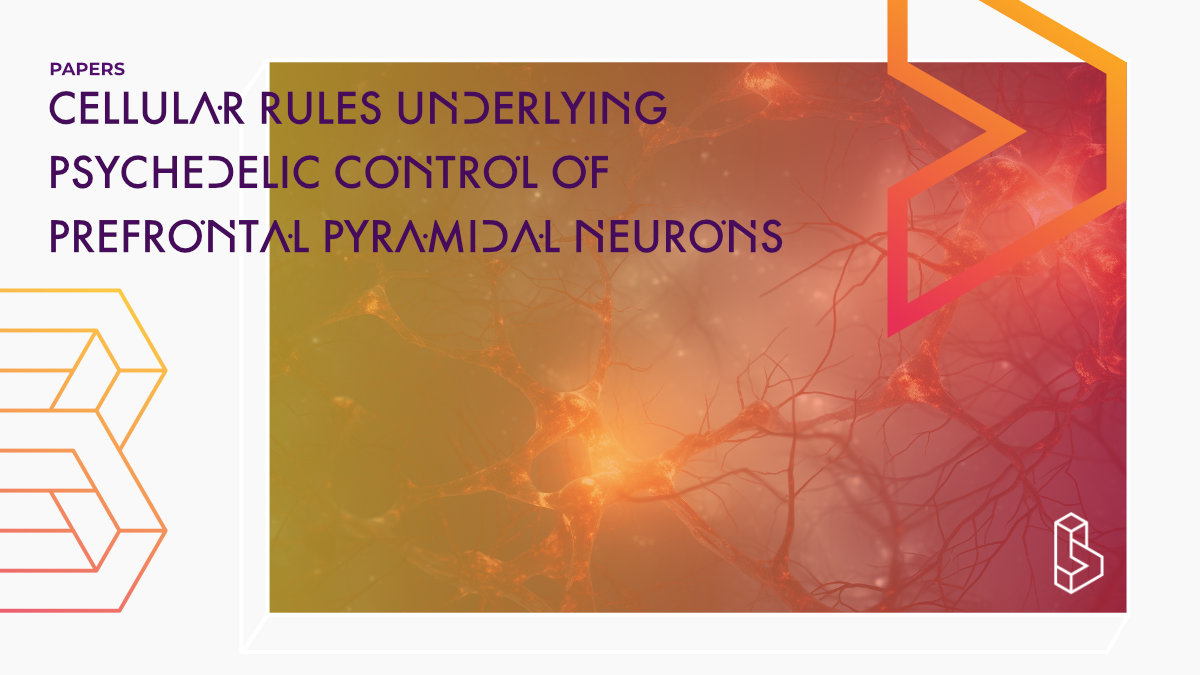This pre-print mice study explores the impact of classical psychedelic drugs on pyramidal cells in the prefrontal cortex. Contrary to previous beliefs, the study reveals that various classes of psychedelics dose-dependently decrease intrinsic excitability of pyramidal neurons. The mechanism behind this effect involves enhancing ubiquitously expressed potassium “M-current” channels, independent of serotonin 2A receptor activation. Machine-learning-based data assimilation models suggest that M-current activation, in conjunction with known mechanisms, significantly reduces intrinsic excitability and shortens working memory timespan. The findings propose that psychedelic drugs modulate brain-wide ion channels, potentially triggering homeostatic adjustments and contributing to widespread therapeutic benefits.
Abstract of Cellular rules underlying psychedelic control of prefrontal pyramidal neurons
“Classical psychedelic drugs are thought to increase excitability of pyramidal cells in prefrontal cortex via activation of serotonin 2A receptors (5-HT2ARs). Here, we instead find that multiple classes of psychedelics dose-dependently suppress intrinsic excitability of pyramidal neurons, and that extracellular delivery of psychedelics decreases excitability significantly more than intracellular delivery. A previously unknown mechanism underlies this psychedelic drug action: enhancement of ubiquitously expressed potassium “M-current” channels that is independent of 5-HT2R activation. Using machine-learning-based data assimilation models, we show that M-current activation interacts with previously described mechanisms to dramatically reduce intrinsic excitability and shorten working memory timespan. Thus, psychedelic drugs suppress intrinsic excitability by modulating ion channels that are expressed throughout the brain, potentially triggering homeostatic adjustments that can contribute to widespread therapeutic benefits.”
Authors: Tyler G Ekins, Isla Brooks, Sameer Kailasa, Chloe Rybicki-Kler, Izabela Jedrasiak-Cape, Ethan Donoho, George A. Mashour, Jason Rech & Omar J Ahmed
Summary of Cellular rules underlying psychedelic control of prefrontal pyramidal neurons
Introduction
Psychedelic drugs induce radical changes in perception and cognition, including altered working memory capacity. It is unknown if serotonergic psychedelics increase both intrinsic and synaptic excitability of prefrontal cortex pyramidal cells through activation of extracellular 5-HT2ARs.
Results
Psychedelics dose-dependently suppress intrinsic excitability of PFC Layer 5 PCs
Find this paper
Cellular rules underlying psychedelic control of prefrontal pyramidal neurons
https://doi.org/10.1101/2023.10.20.563334
Open Access | Google Scholar | Backup | 🕊
Cite this paper (APA)
Ekins, T. G., Brooks, I., Kailasa, S., Rybicki-Kler, C., Jedrasiak-Cape, I., Donoho, E., ... & Ahmed, O. J. (2023). Cellular rules underlying psychedelic control of prefrontal pyramidal neurons. bioRxiv, 2023-10.

